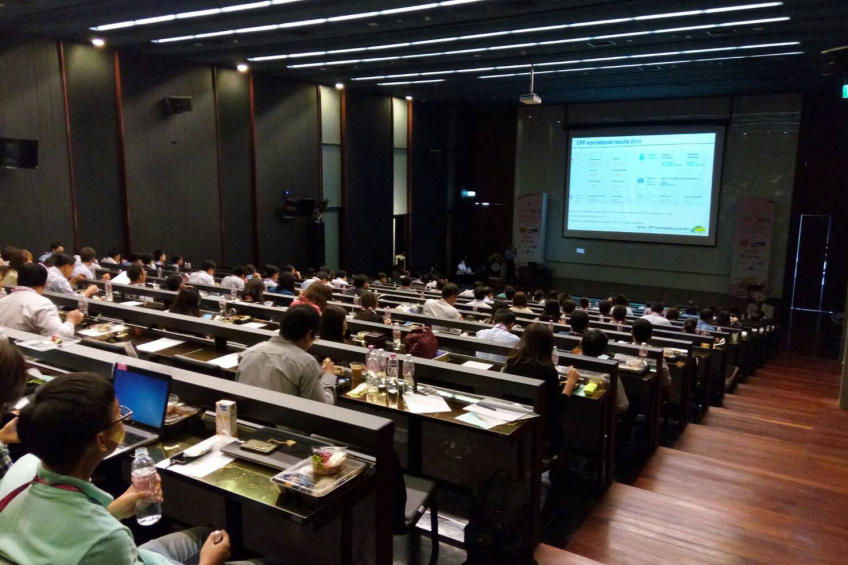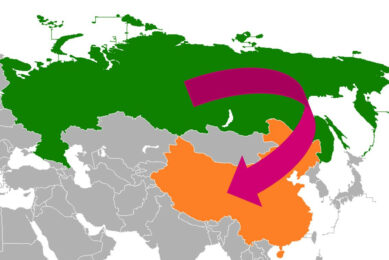Thai uni zooms in on antimicrobial resistance

Antimicrobial resistance in Asia is gaining increasingly more attention, as this year’s edition of the Chulalongkorn University Veterinary Conference showed.
As a veterinary conference it covered a range of topics in a range of animal species, from pigs, poultry, cattle, fish and companion animals. With the new dean of the faculty, Professor Roongroje Thanawongnuwech, a pig viral specialist in his own right, there was a major emphasis on pig diseases.
Most notably, diseases like Porcine Reproductive and Respiratory Syndrome virus (PRRSv), Porcine Epidemic Diarrhoea (PED) and coronavirus, Porcine Circovirus (PCV) and Foot-and-Mouth Disease (FMD) received attention, and how to free the country from this infection. There were also lectures on reproduction covering artificial insemination and induction of oestrus.
Antimicrobial resistance in animals
One of the main themes was antimicrobial resistance both in farm animals and companion animals. The direct close contact with animals both farmed and as companions increases the risk of coming into contact with animal bacteria and potentially some of these will carry antimicrobial resistance genes.
This is important in emerging economies where chickens, especially, are found everywhere, in temples and homes, and increasingly companion animals are becoming more popular, especially in the cities.
Discovery of resistance gene in China
Antimicrobial resistance is now becoming a global issue, and has been brought home to us in Europe by the emergence of colistin resistance and the discovery of the mcr-1 resistance gene in China. This gene has appeared in human medicine, where colistin, although originally discarded from human use, has now come back as the antibiotic of last resort for many Gram-negative infections such as Escherichia coli, Klebsiella pneumoniae and Pseudomonas aeruginosa.
These infectious agents can develop resistance to the more common antibiotics comparatively quickly. This gene has now been identified in the EU and although it has not been associated with a frequent cause of resistance in man to date, it is being reviewed by the European Medicines Agency to see whether it should be reserved for human use only.
Use of antibiotics in Asia
In Thailand and many parts of Asia, the use of antibiotics has been quite liberal and not necessarily under veterinary control or prescription. In-feed use is quite extensive for growth promotion in some cases but mainly for disease control. The availability of antibiotics from cheaper, generic supply sources like China has also added to the availability and the cost/benefit of using antibiotics to both treat and prevent infections and improve productivity.
Professor Rungtip Chuanchuen, Chulalongkorn University, Thailand, gave an excellent couple of papers on antimicrobial resistance (AMR) in the food-animal sector and showed that extended-spectrum beta lactamases (ESBL) producing bacteria were very low in Thailand but there was antibiotic resistance associated with class 1 integrons that carried resistance genes against trimethoprim and aminoglycosides and these were found in many animal species and human beings. She also discussed AMR monitoring and how this helped producers use antibiotics more wisely and effectively and that they offer that service.

Isolates from Vietnam and Malaysia
Comparisons were made with isolates from Vietnam and Malaysia. Genotyping, determining the resistance gene can be helpful but is very specific and expensive for general use. Monitoring the phenotype, i.e. the bacteria that is causing the disease and using primarily sensitivity discs is still far and away the most practical and important approach.
Colistin resistance was at about 5.8% of pig E. coli isolates but the mcr-1 gene had not been demonstrated. The university has set up a research unit in Microbial Food Safety and Antimicrobial Resistance for surveillance and monitoring, for risk assessment analysis, develop control and prevention methods and improve detection methods.
Role of OIE in antimicrobial usage
A lecture by Dr Gordoncillo from the Office International des Epizootiques (OIE) or the World Organisation for Animal Health, as they like to be called, also talked about their role in monitoring and advising on antimicrobial usage and resistance in food animals. They are setting up a global database and 70% of countries have submitted information.
They have found over 100 countries with no antibiotic usage control and unrestricted access. Another major problem is counterfeit products. There is a greater need for collaboration, setting of standards, technical capacity building, data collection and management and also country support.
Also interesting: David Burch is a veterinarian with over 40 years experience in practice, industry and consultancy. He has written many articles for Pig Progress on the topic of antimicrobials. Click here to read more from David
FAO: update on the work going on in Asia
Dr Benigno from Food and Agriculture Organisation (FAO) also highlighted the problems on a global basis but also discussed the work that is going on in Asia, where 60% of the world’s population live. Their plan of action includes:
- Improve awareness and advocacy on AMR and related threats
- Develop capacity for surveillance and monitoring of AMR and AMU (antimicrobial use) in food and agriculture
- Strengthen governance related to AMU in food and agriculture
- Promote good practices in food and agricultural systems and the prudent use of antimicrobials.
Antimicrobial resistance: a global problem
Antimicrobial resistance is a global problem, not only in agricultural use but especially in human use. It is very pleasing to see the major UN organisations addressing these issues such as the FAO and also the OIE as they have the basic understanding of agriculture and animal production needs and the variations that occur country by country around the world and should be encouraged and supported.
By comparison, the EU is becoming over-regulated and over-restricted, whether this will have the required benefits for human health will remain to be seen. The whole issue has to be addressed, however, on a global basis with the increasing travel and migration of people and the potential spread of problems from one side of the world to the other.
Papers of the conference can be found at the website of Chulalongkorn University.











